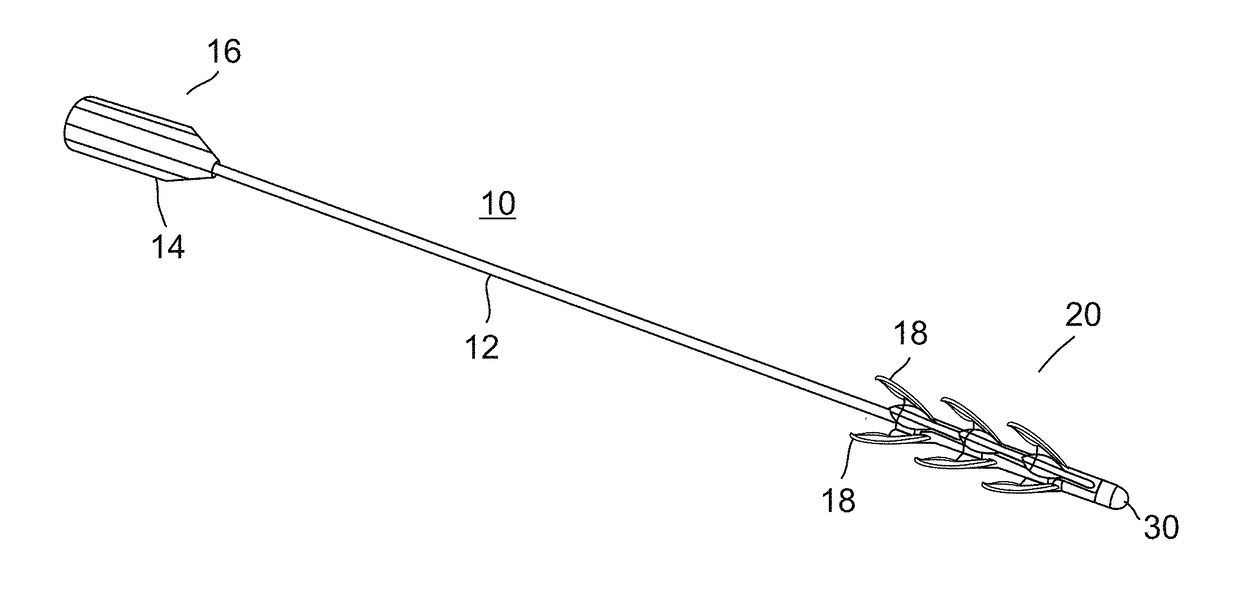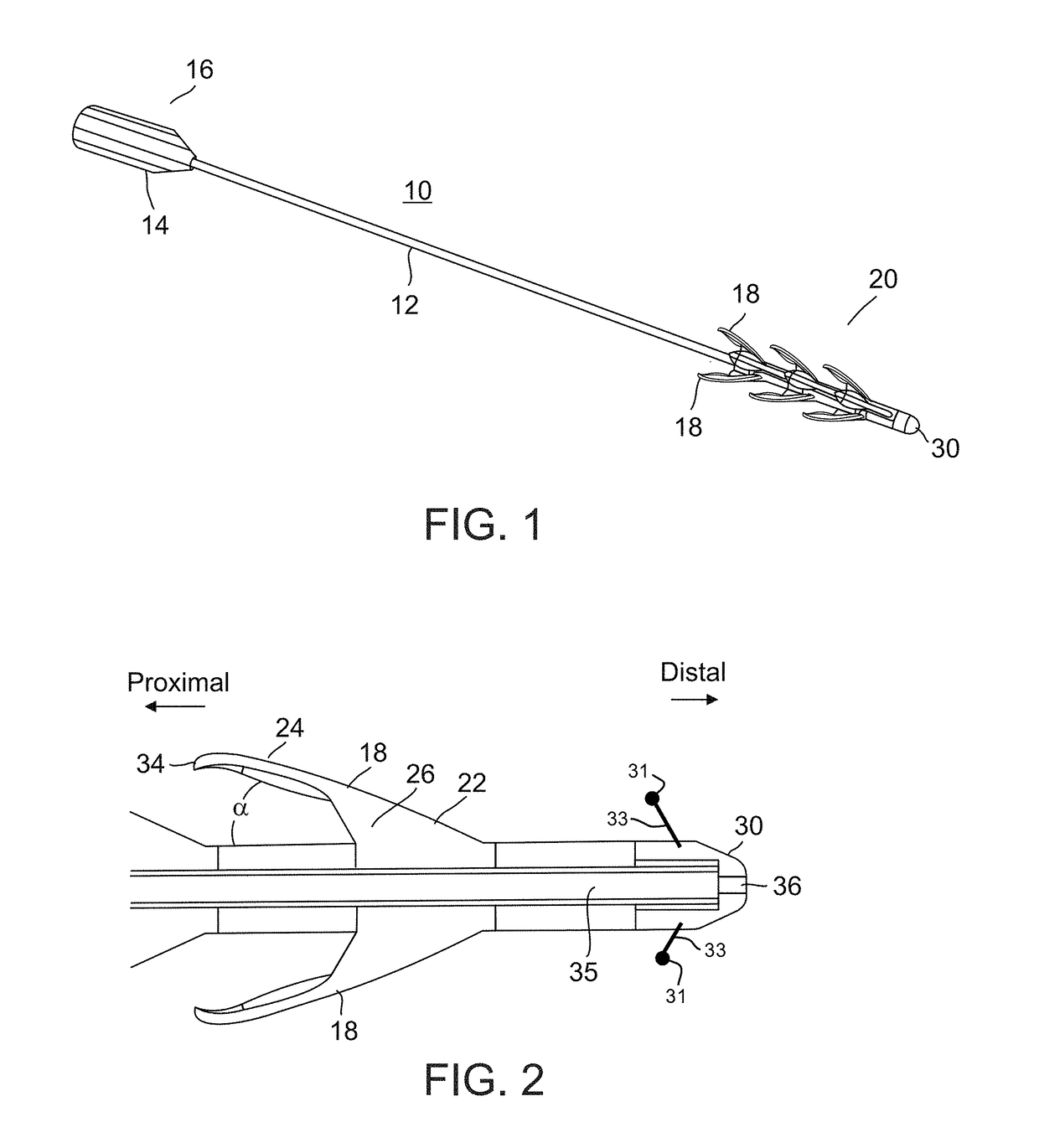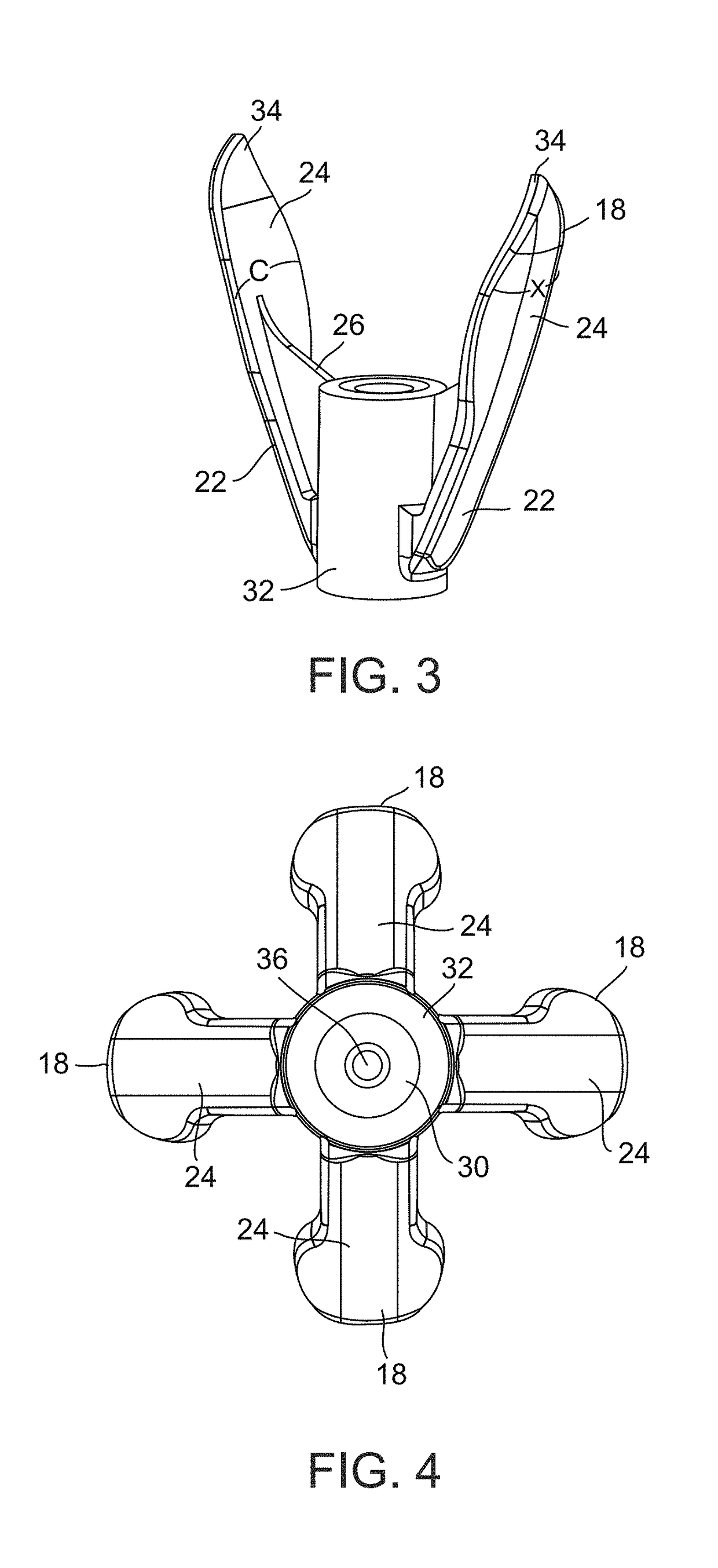Device and method for removing occlusions in a biological vessel
a biological vessel and occlusion technology, applied in the field of catheters, can solve the problems of increasing the risk of distal emboli, thrombotic debris release, trauma to the vascular tissues, precipitating vasospasm, etc., and achieves the effect of effective and non-traumatic clearing of occlusions
- Summary
- Abstract
- Description
- Claims
- Application Information
AI Technical Summary
Benefits of technology
Problems solved by technology
Method used
Image
Examples
example 1
Bench Testing of a Prototype
[0117]Several prototypes of the device of the present invention were constructed by mounting 4 pairs of 30 mm long and 8 mm wide silicone projections (10 mm stem portion and 20 mm leaf like structure) on a stainless-still rod 1 millimeter in diameter. Two types of projections were tested, ‘soft’ projections fabricated from 70 Shore silicone (FIG. 8B) and reinforced projections fabricated from 70 Shore silicone and including a 20 mm plastic strut fixed to the stem portion and a portion of the leaf-like structure of each projection (FIG. 8A). Two configurations of projections were tested, pairs arranged with a 90 degree rotational offsets, and pairs arranged with a 45 degree rotational offset.
[0118]The total diameter of the device was 25 mm when the projections were in the open configuration (FIG. 8A) and 10 mm when in the closed configuration (FIG. 8B).
[0119]The device prototypes were tested for the ability to remove a blood clot from a tube.
[0120]Fresh hu...
example 2
[0135]An 80 Kg female swine was anesthetized and a mid-line laparotomy was conducted to expose the retro peritoneal space and allow aortic puncture. A 16 F introducing sheath was delivered into abdominal infra-renal aorta using the Seldinger approach.
[0136]A thrombus measuring approximately 2 cm in length and 5 mm in diameter was prepared from autologous whole blood incubated with Barium (10 cc whole blood to 1 g of Barium sulfate) for two hours at room temperature using a method previously described by Kan L, et al. A novel method of thrombus preparation for use in a swine model for evaluation of thrombectomy devices. AJNR Am J Neuroradiol. 2010 October; 31(9):1741-3). The thrombus was introduced into the sheath and delivered into the left internal iliac artery under fluoroscopy (FIG. 13A).
[0137]An occlusion of the left internal iliac artery was demonstrated via angiography (FIG. 13B).
[0138]A prototype catheter was fabricated using a 70 Shore silicone mixed with 10% r...
example 3
[0141]A pig study was conducted in order to demonstrate the safety feature of the present device during artery passage and to compare device safety with Nitinol spiral-shaped stent retriever commonly used in thrombectomy procedures.
[0142]Materials and Methods
[0143]An 81 Kg female swine was anesthetized and a mid-line laparotomy was conducted and the retro peritoneal space was exposed to allow aortic puncture. The Seldinger's technique was used to deliver a 16 F introducing sheath into the abdominal infra-renal aorta to enable subsequent arterial access and catheterizations of the target vessels. The anatomy of the distal aorta, iliac and femoral arteries was demonstrated via angiography (FIGS. 14A and 14C) and the internal diameter (ID) of the target arteries was measured using standard calibrated techniques. The following arteries were used for the procedures:
[0144](i) Right External Femoral artery (distal) (T1); average ID 4.2 mm—present device
[0145](ii) Right Intern...
PUM
 Login to View More
Login to View More Abstract
Description
Claims
Application Information
 Login to View More
Login to View More - R&D
- Intellectual Property
- Life Sciences
- Materials
- Tech Scout
- Unparalleled Data Quality
- Higher Quality Content
- 60% Fewer Hallucinations
Browse by: Latest US Patents, China's latest patents, Technical Efficacy Thesaurus, Application Domain, Technology Topic, Popular Technical Reports.
© 2025 PatSnap. All rights reserved.Legal|Privacy policy|Modern Slavery Act Transparency Statement|Sitemap|About US| Contact US: help@patsnap.com



